After landing and getting our bearings in the major Chilean cities of Santiago and Valparaiso, we’re continuing our journey through the lands way south of the (U.S) border in two incredibly different landscapes: the world’s driest desert and the largest waterfall on the planet. Take a look at traveling from Atacama to Iguazú in Chile and Argentina.
From Atacama to Iguazú In Chile and Argentina
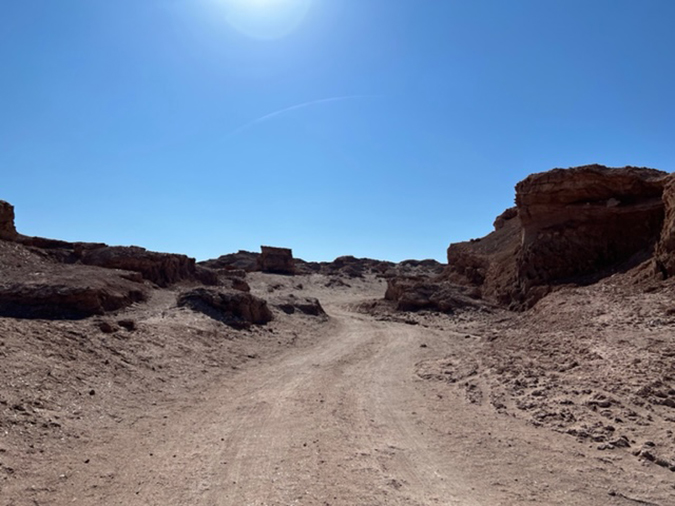
Atacama
This desert region, Atacama, is situated mostly in northern Chile. If you’re visiting, you’ll likely stay in or near San Pedro de Atacama, a quaint little adobe town complete with a town square that looks like it hasn’t changed much in the past century.
YES! I LOOK FORWARD TO #GROWINGYOUNGER
PLEASE SUBSCRIBE ME TO YOUR MAILING LIST.
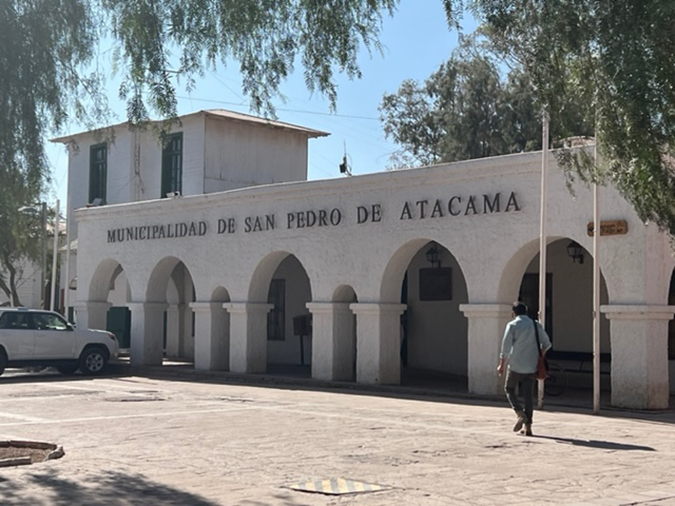
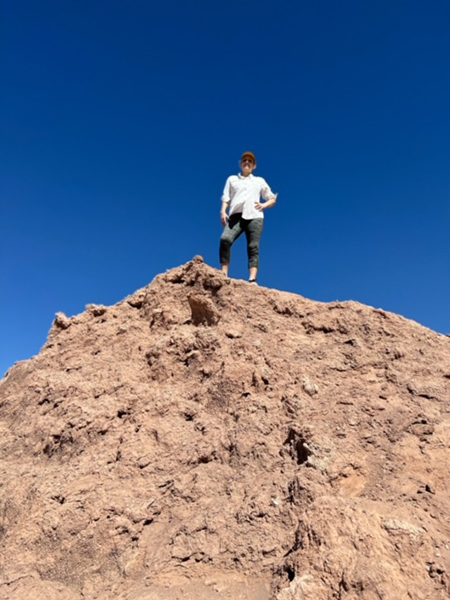
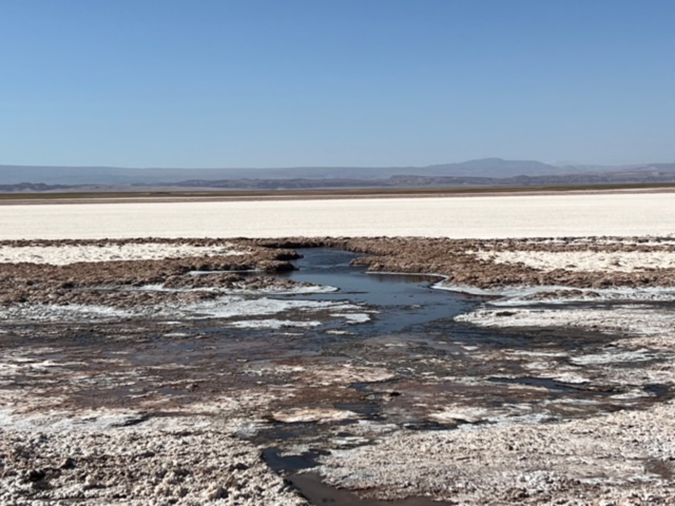
Star Wars fans will recognize some of the landscapes from The Mandalorian; parts of the Motorcycle Diaries and a number of other movies were filmed in the Atacama as well. The almost-lunar landscapes, stark rock formations, volcanoes, and salt flats with flamingos standing in crystal blue pools make for a stunning backdrop to any story. You can also find Inca carvings in the rocks on some hikes if you have a knowledgeable guide.
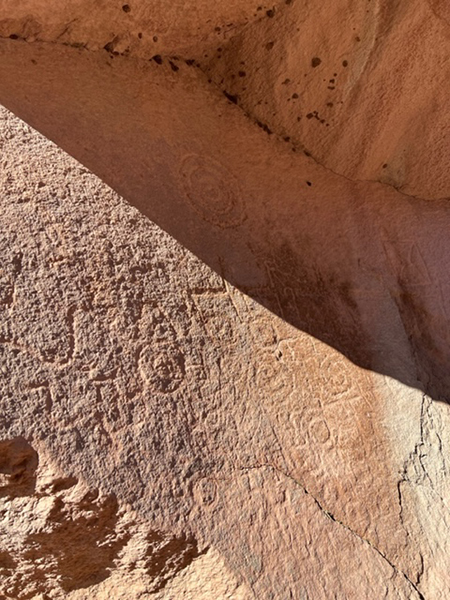
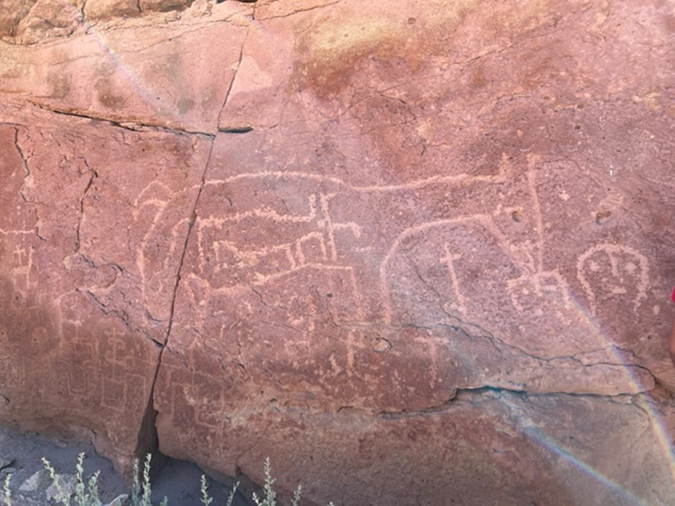
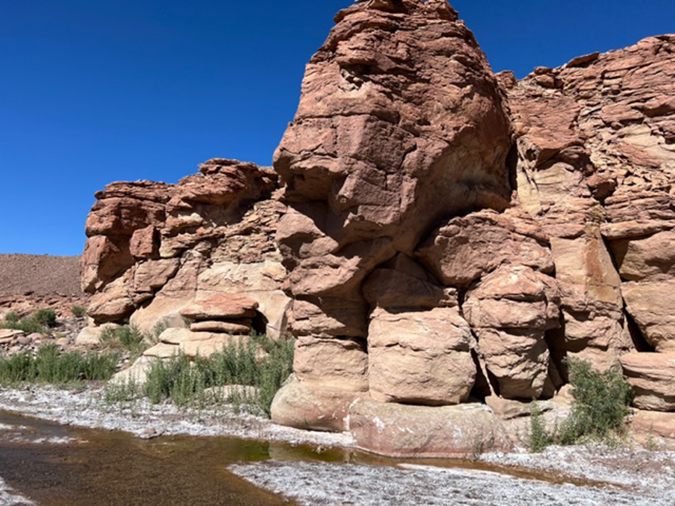
Of course, one of the primary reasons that people go to the Atacama is for the astro-tourism! You can’t miss going star-gazing and seeing the night sky sans light pollution. Your hotel will likely be able to arrange visits to some of the observatories and their ultra-powerful telescopes, where you will be able to see and learn more from resident astronomers.
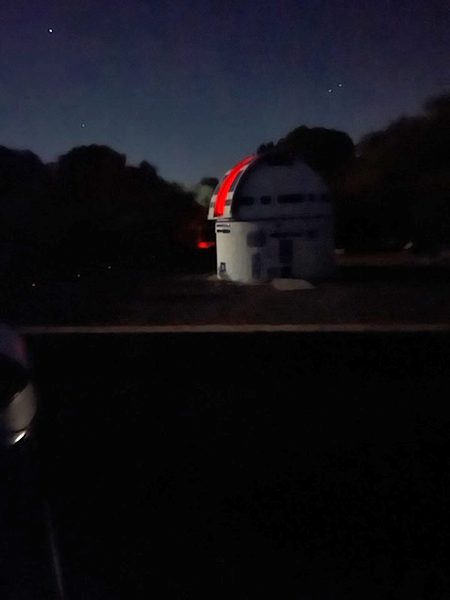
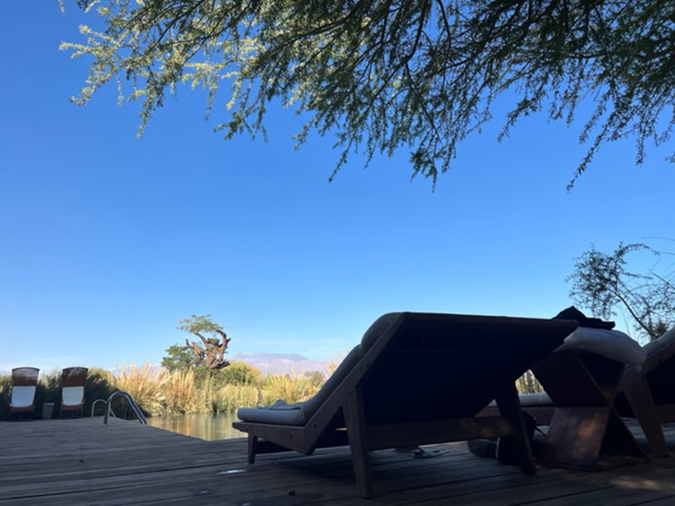
Where to stay in Atacama:
There are several boutique hotels that offer plenty of opportunities for adventure in addition to high-end spas and Eco-friendly pools and hot tubs. Trust us, you’ll deserve that spa time after a day or two climbing volcanoes in the world’s driest climate!
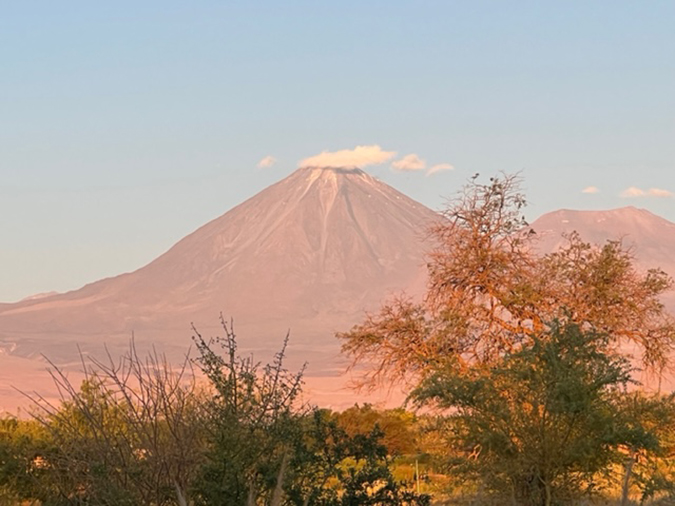
We love Tierra Atacama for their excellent team and relationships with local guides and beautiful interior design (including your own private desert patio and an indoor/outdoor shower), plus the stunning views of the Lincancabur volcano from the pool and grounds
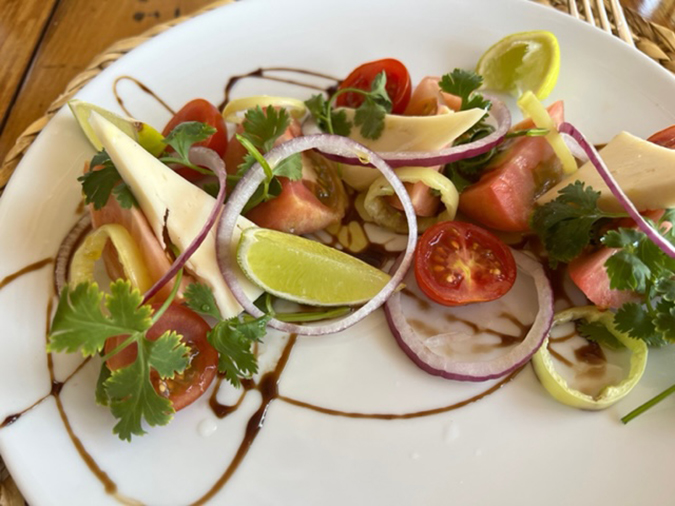
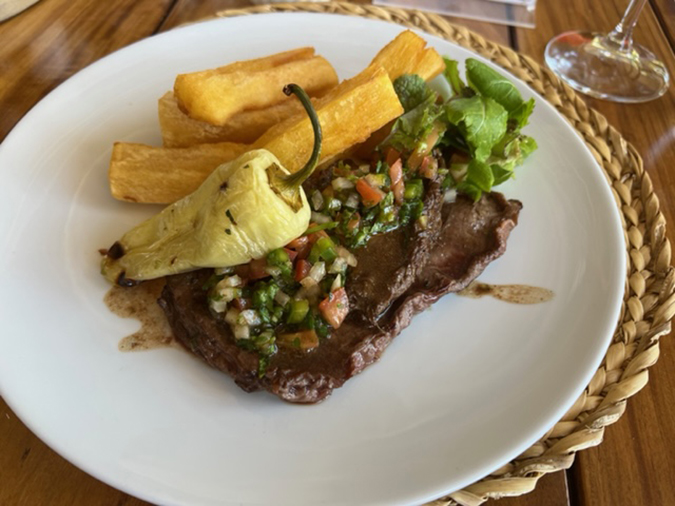
What and where to eat:
Like the rest of Chile, the Atacama region is full of amazing ice cream shops and you’ll need it after a day out in the heat. Many hotels offer full or partial board and have good restaurants with hearty but healthy dining options–think high protein meals with eggs, beef, chicken and lots of veggies.
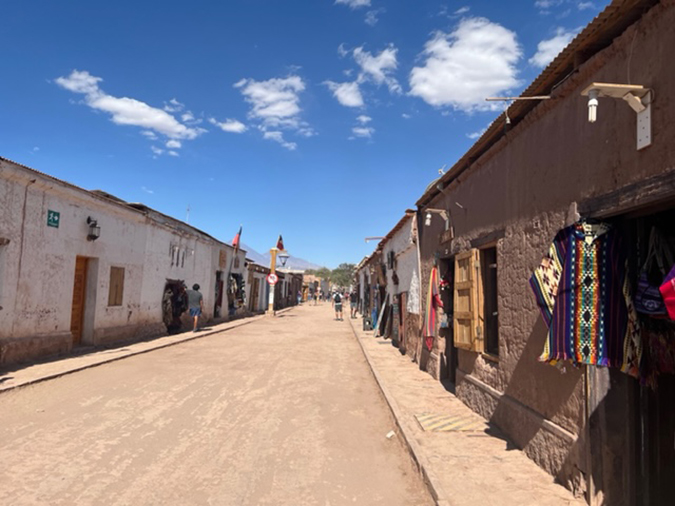
What to buy:
You can buy semi-precious stones and crystals mined in the region, ponchos, blankets, hats, scarves, and more crafted from alpaca or vicuna wool and featuring traditional patterns, and other standard souvenirs like keychains and postcards.
What to pack:
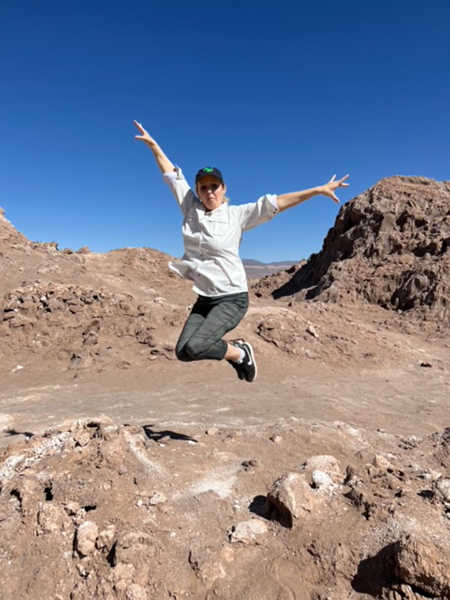
The Atacama region is a super casual area and most travelers are there for the landscapes and the challenge of exploring the desert, so you want to think practical, sturdy, and capable of withstanding a nice coating of desert dust. UV-proof clothing from outdoor retailers like Patagonia and Columbia will be everywhere, and there’s no need for anything but hiking sneakers or boots. Don’t forget some warm clothes for nights of star-gazing and a swimsuit or two for a dip in the pool or salt flats!
How to adventure:
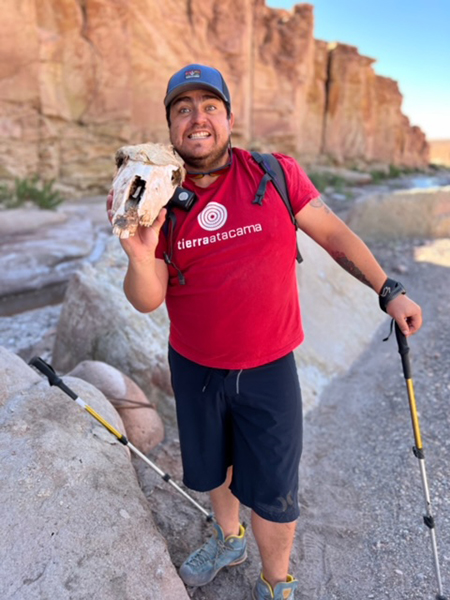
There is no shortage of ways to explore the desert and take all those instagram-worthy pics with other-worldly backdrops. We recommend working with your hotel to schedule tours of the various valleys, rivers, salt flats, geysers and (mostly) dormant volcanoes. (Trek in the rivers for a cooler journey that’s an excellent workout. The water goes up to your knees or so).
You can also ride horses, bikes, ATVs, or even motorcycles through the desert, or go rock climbing/bouldering or sandboarding. (We recommend that you should try out the latter two activities only if you have previous experience, however, the Atacama desert is not an ideal place for beginners!).
Atacama – What to know:
It’s hot and incredibly sunny during the day, but freezing cold at night in the Atacama desert (and you’ll want to go out at night at least once to see the stars), so pack accordingly. Most of the interesting spots are at higher altitudes as well, so you’ll want to rest when you need to and stay extra hydrated.
Nearly all the roads in San Pedro de Atacama itself are unpaved and the town itself is fairly small. It’s only about twelve blocks or so, surrounded by hotels, most of which have their own restaurants and connections with guides and excursion leaders.
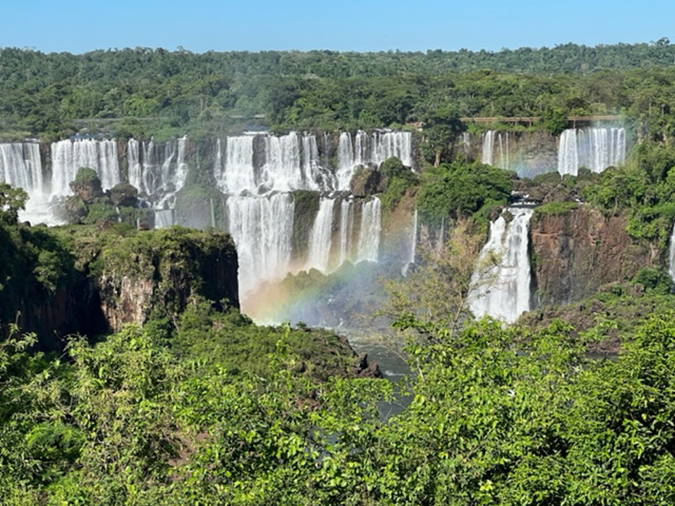
Iguazú
One of the natural wonders of the world, the series of waterfalls sandwiched between Brazil, Paraguay and Argentina in Iguazú must be seen to be believed. Their grandeur and sheer power is compelling enough, but the fact that they are surrounded by subtropical rainforests and one of the most eco-diverse areas of the world definitely adds to their appeal.
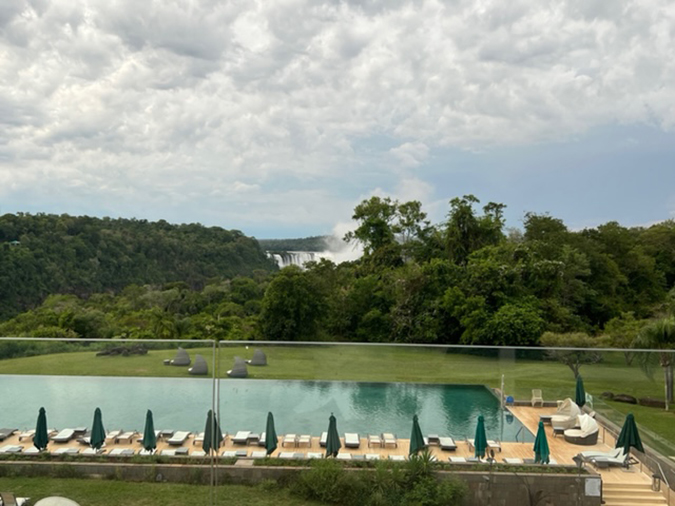
Where to stay in Igazú:
There are a number of hotels in the area, but only two in the park itself. The Gran Melia on the Argentinian side with an amazing pool and views of the falls, and the Belmond on the Brazilian side that perches on a peak overlooking where the rivers meet.
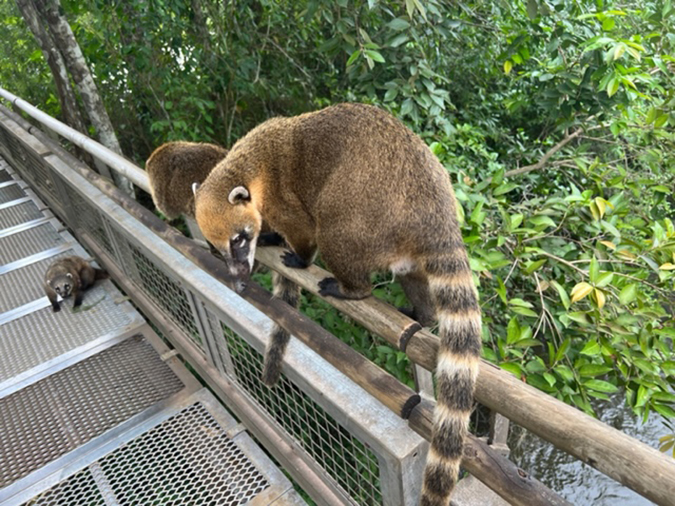
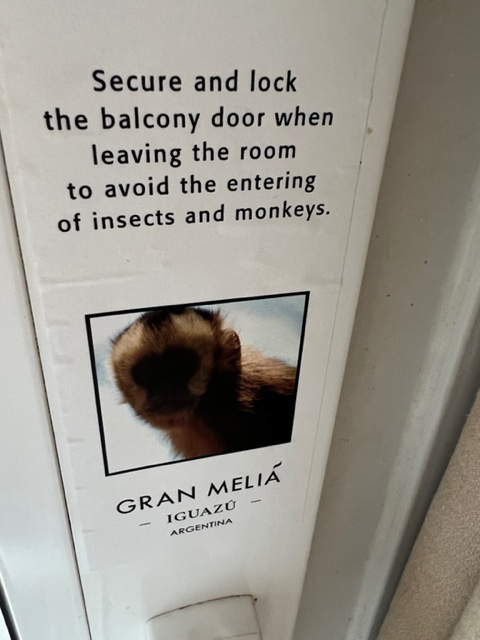
Note that any hotel in the area will have capuchin monkeys on the property, so be sure to keep your room locked and balcony doors shut! They are adorable but they definitely want to steal treats and any small shiny objects you might have with you.
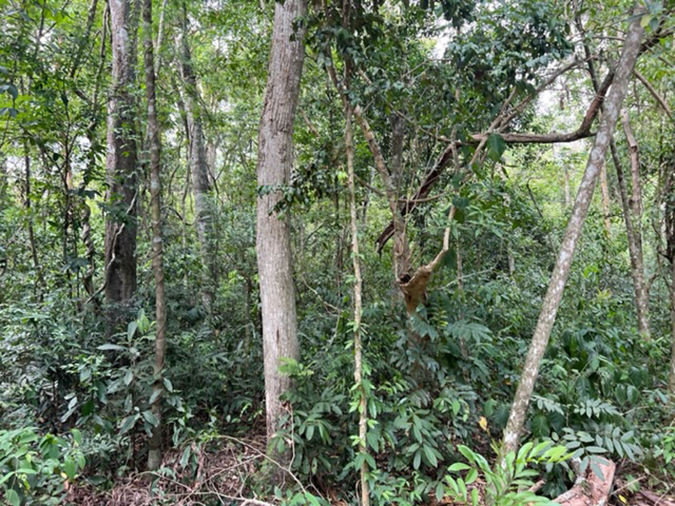
What and where to eat:
The park at the falls has a few restaurants that have standard tourist fare, and you can find more choices in Puerto Iguazú or Misiones (the nearest Argentine city). The Gran Melia hotel has a seafood restaurant that focuses on regional specialties and has both Argentine and Brazilian dishes (along with sushi) on the roof, which is ideal if you can make it there to see the sun set over the falls.
What to buy:
The normal tourist trap items are on offer, but you can also find gemstones like Amazonite and Rhodochrosite (the rose of the Inca) and balsa wood carvings of local birds and animals done in the native style.
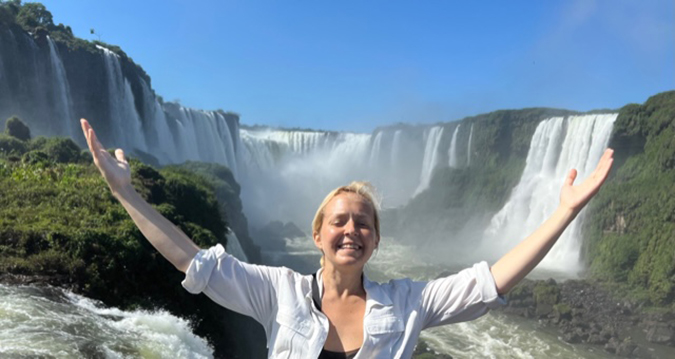
What to pack:
It is hot and you will be surrounded by waterfall mist and rainforests, so swimwear and whatever you think can stand the humidity the best (don’t even try with the hair and makeup, Mother Nature will win). And plenty of sunscreen!
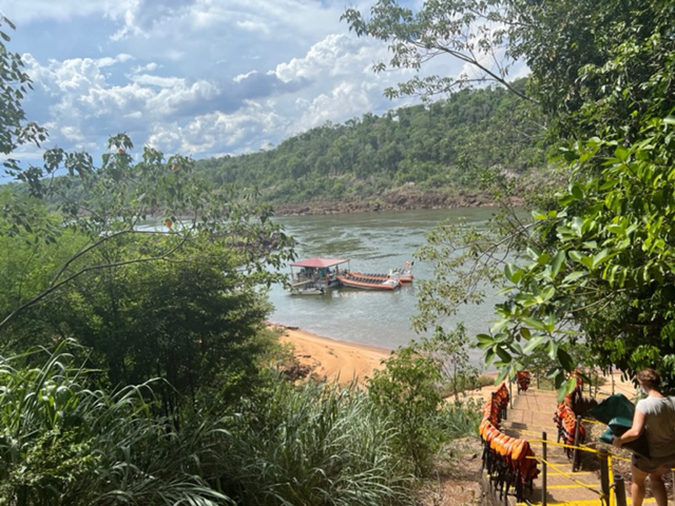
How to adventure:
If you’re brave and not afraid of being drenched and trekking through the jungle a bit, you’ll want to take the Gran Adventura tour with the boats that go up to and underneath the walls! Be aware that while it’s fairly short, there are some serious rapids (you’ll be tossed around) and of course you’ll get soaked in the falls. You’ll also have to go up and down a couple hundred stairs to get to the boats, so be ready to climb.
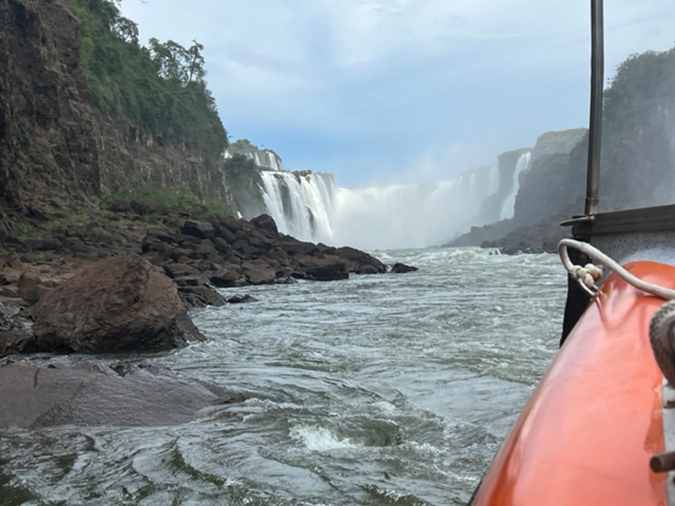
You can explore the national parks on your own and check out the flora and fauna of the area, but you’ll need to hire a guide to go off path into the jungle and of course, choose an Argentine or Brazilian company to take you on an adventure boat into the falls.
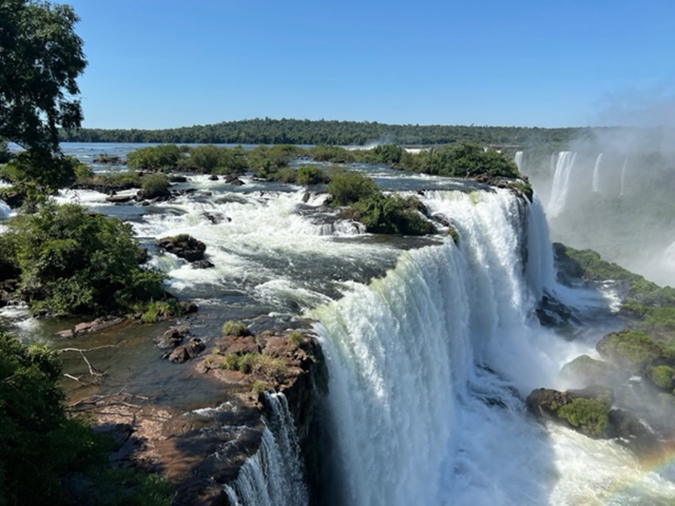
The falls themselves have multiple paths and overlooks that you can tour without a guide, and you can take a tourist train around to make things quicker and easier (the pathways are mostly flat but it is super hot and humid). You can also explore the national park around the falls and see colorful tropical birds like toucans and parrots, anteaters, tapirs and even ocelots or jaguars if you are especially lucky.
What to know:
You can explore the national parks on your own (crossing the border into Brazil for the day is fairly simple–make sure you get a passport stamp to make things easier on the way back!), but hiring a guide and driver is inexpensive and a good way to learn more about the flora and fauna of the area.
Where to next?
Travel south to Patagonia or perhaps to the cosmopolitan streets of Buenos Aires!
Are you planning a trip soon? Where are you going and where do you want to explore? What is your dream destination? Let us know in the comments or in our Growing Younger Facebook group and remember that learning new things and exploring can keep your mind and body looking and feeling youthful!
-Jacqueline Zenn
Photos: Jacqueline Zenn for Fountain Of 30
You may also like to read more of Jacqueline’s travel guides like Travel: Escaping To Pura Vida In Costa Rica and Travel To The Mystical And Magical Peru.
Are you following Fountain Of 30 on Facebook, Twitter, Instagram and Pinterest? We’ve got lots going on, so join in on the fun! Subscribe to our newsletter here. You don’t want to miss a post and promise not to bug you to death. We also started a Facebook Group called Growing Younger for women to discuss everything good and bad about being over 40. Additionally Lauren now hosts a podcast called Beauty is a Bitch! and a weekly Instagram Live series called “Growing Younger Gabfest with Lauren.”
Image layout: Fountain Of 30
Please pin!



I’ve followed your trip and it has made me more interested in Chile than I was.